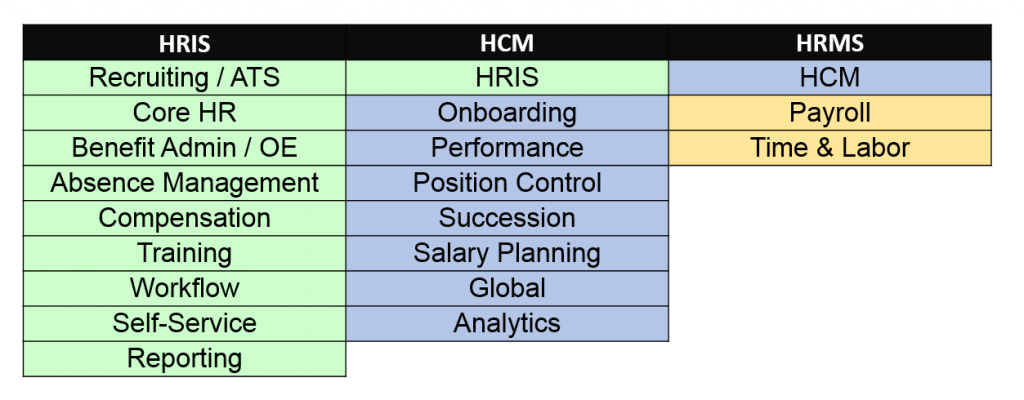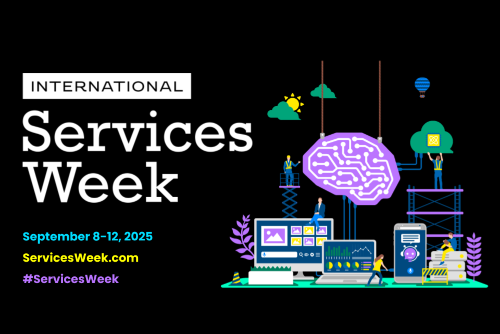Types of HR technology systems: HRIS vs. HCM vs. HRMS

HRIS, HCM, HRMS – if you’re confused about the difference between these HR technology systems, you’re not alone. Thanks to vendors, marketing professionals and analysts interchangeably using these terms when marketing their technology solutions, these acronyms have befuddled many in the HRIS industry. There are lots of other acronyms being used to describe HR software solutions such as HRM (Human Resource Management), TMS (Talent Management System), ATS (Applicant Tracking System) and LMS (Learning Management System), but the three most commonly used terms to describe HR, Payroll and/or Talent Management software are:
- HRIS (Human Resource Information System)
- HCM (Human Capital Management)
- HRMS (Human Resource Management System)
So, what’s the difference between these different types of HR technology systems: HRIS vs. HCM vs. HRMS?
Would some of the best-known HR technology experts (i.e. Naomi Bloom, Jason Averbrook, Bill Kutik or Josh Bersin) agree on the definition of these acronyms? I’m not entirely sure they would. And while you can surely look to Wikipedia to define these systems, you may not find clarity there either. Having worked in the HR technology industry for more than 20 years, here is my point of view on the difference between HRIS, HCM and HRMS:
The HRIS vs. HCM vs. HRMS chart below shows the major functional differences between the three acronyms and what functionality should be associated with each.
HRIS (Human Resource Information System)
HRIS software is designed to manage people, policies and procedures. Unless the employees reside outside the U.S., the majority of vendors pitching HRIS only cater to businesses that employ U.S. citizens.
Keeping this at a high level, I have categorized (9) major capabilities that define an HRIS in the chart above. This of course is open to interpretation, but I feel these are the major characteristics.
HCM (Human Capital Management)
HCM software includes every element of an HRIS, but adds Talent Management and global capabilities such as multi-lingual, multi-currency, country-specific formatting and possibly localization.
Listed above are what I believe to be the major functional elements for a vendor to call its solution an HCM.
HRMS (Human Resource Management System)
HRMS software providers typically cover every element of an HRIS and many include the capabilities of an HCM. Because the HRMS business is so massive and covers such a wide range of employee size and functional requirements, not all HRMS providers have a progressive Talent Management component included in their offering. Some of the HRMS vendors look like this [HRIS + (Payroll + TLM) = HRMS] while others have built their offering to look more like this [HCM + (Payroll + TLM)].
The hot HR technology industry continues to move at the speed of light with the addition of new cloud vendors and consistent M&A activity. I don’t foresee the vendor and analyst landscape getting to the point of 100% agreement on these definitions, but I do believe that by putting definitions to the acronyms and applying a specific level of expected functionality to each term, provides some clarity to individuals better evaluating HR technology vendors.
Recent Articles
Maximize your Salesforce investment with Certinia







